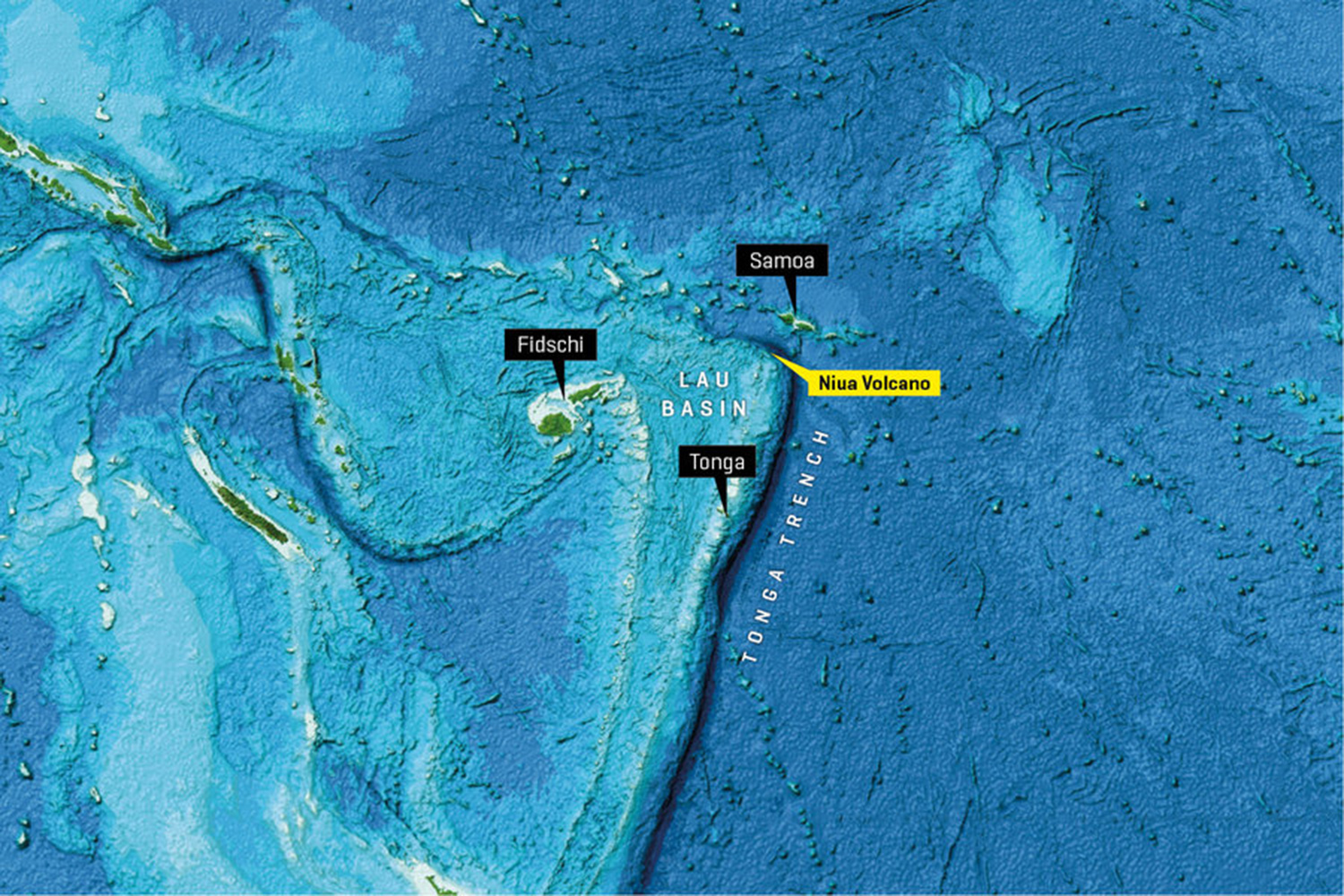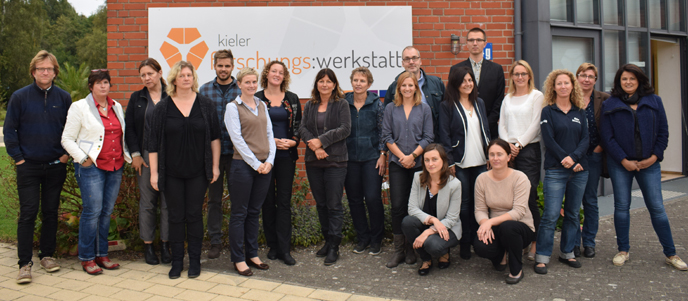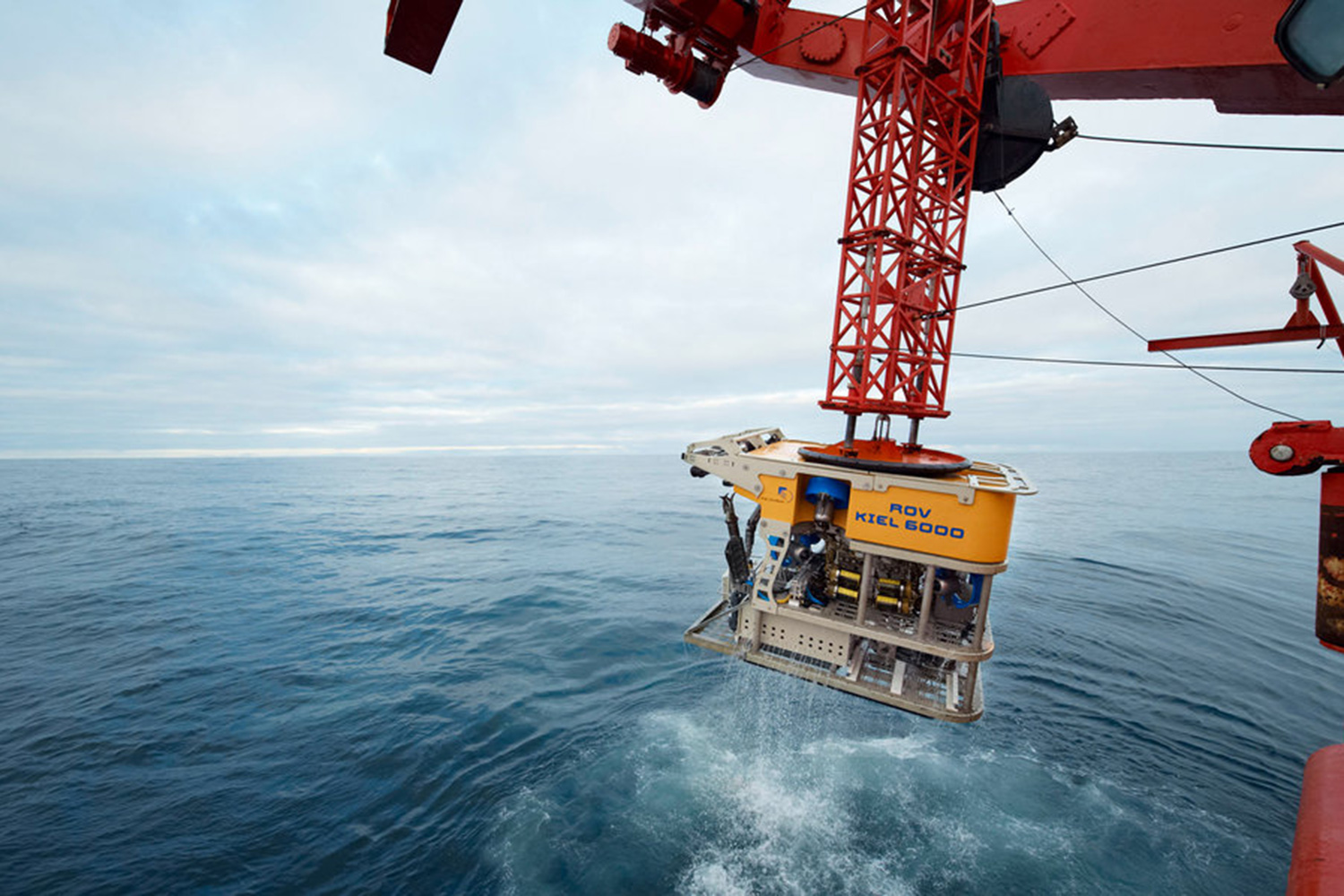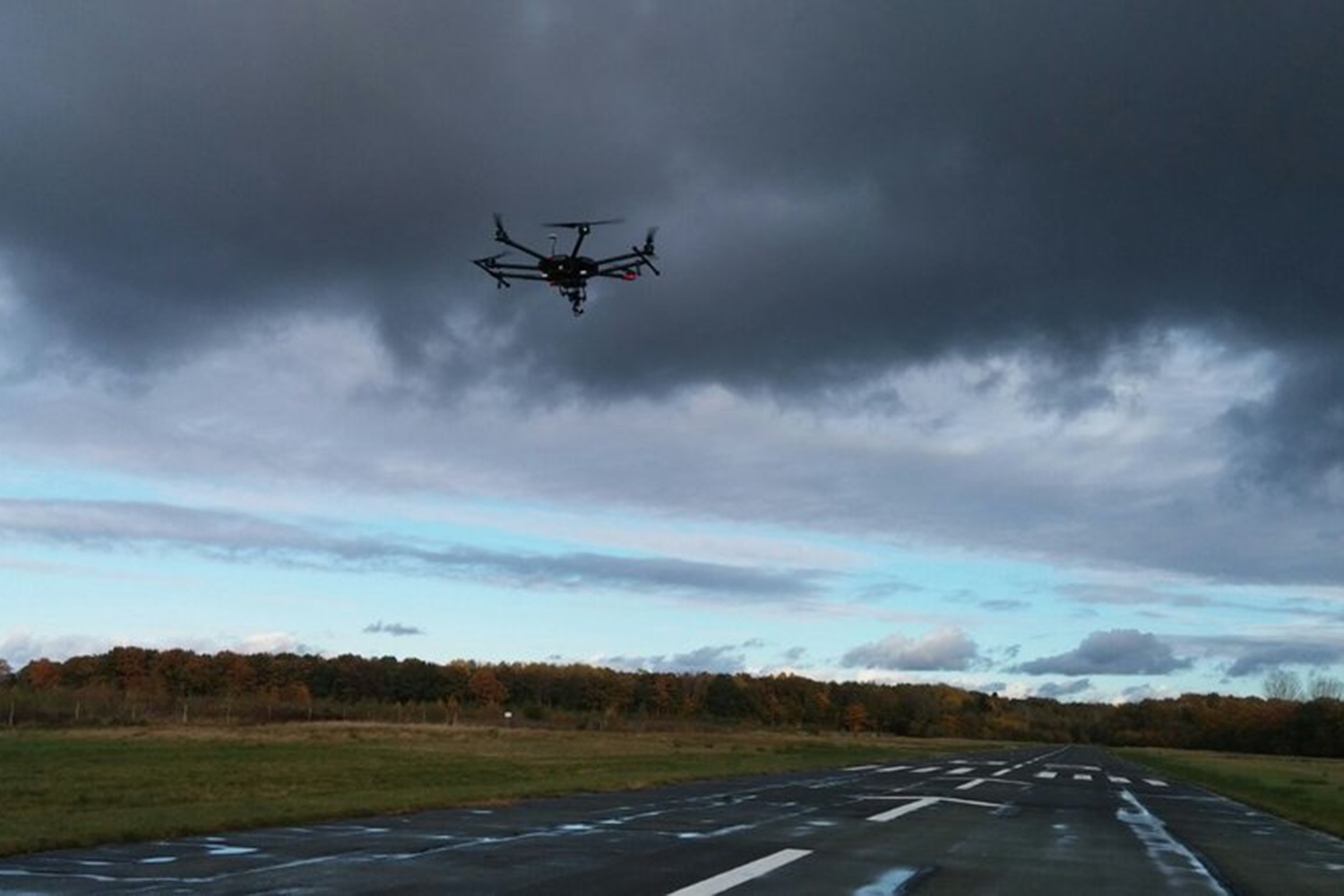Vents several meters high on the sea floor from which dark, hot liquids are welling up and around which alien-seeming life splashes about – it is less than forty years ago that human beings first discovered “black smokers” in the deep sea. Back then, scientists worked on the sea floor of the East Pacific with the American submersible deep sea boat Alvin and marveled at their discovery through the tiny portholes of the pressure-resistant shell. Nowadays, it is mostly the task of autonomous deep-sea drones and cable-controlled robots to detect and study hot springs in the depths of the oceans. Meanwhile, industry has developed an interest in so-called hydrothermal systems because they are a source of precious mineral deposits. However, less than a fraction of all sites has yet been discovered and many questions concerning the biology, the geology and the geochemical processes surrounding the hot springs have not yet been answered.
Under the scientific leadership of the GEOMAR Helmholtz Centre for Ocean Research Kiel the research ship FS FALKOR of the Schmidt Ocean Institute (SOI) is sailing to the Niua underwater volcano about 200 meters southwest of Samoa. “There is a hydrothermal field with a size of about 200 by 200 meters which we want to measure precisely with the help of the latest methods in order create a 3-D computer model of the formations with previously unknown precision,” explains expedition leader Dr. Tom Kwasnitschka from GEOMAR.
Another particularity of the expedition: Around the clock, video streams are being broadcast to the internet by the deep sea robot ROPOS and directly from the ship. In this way, everybody who wants to follow the work on the sea floor live gets the possibility to do so. Moreover, live broadcasts are planned for two lecture events at GEOMAR in Kiel and at the planetarium in Münster. “Guests will then be able to ask us questions directly and at the same time take a look at the black smokers in the deep sea thousands of kilometers away,” announces Dr. Kwasnitschka.
The expedition will provide scientists on board as well as their colleagues at home with new insights. With a whole range of special cameras, every angle of the hydrothermal field is measured in a complex procedure. On board, a high-performance computer calculates a digital three-dimensional model of the entire landscape out of over one hundred thousand images. In the course of the expedition, geologists, deep sea biologists and biogeochemists on board will use this 3D map to take specific samples.
“The digital 3D reconstruction method allows us to do a virtual walk on the sea floor for the first time – even after the expedition. In this way colleagues who are not on board themselves will have the possibility to take part in the studies,” explains Dr. Kwasnitschka, “The scientists as well as the general public will be provided with an image of the deep sea landscape in a resolution which has not been available before, with a brilliance and colorfulness as if someone had just drained the water away.”
Links:
www.schmidtocean.org The Schmidt Ocean Institute
www.schmidtocean.org/cruise/virtual-vents-changing-face-hydrothermalism-revealed The expedition webite with blog on the homepage of the Schmidt Ocean Institute
http://www.geomar.de/en/service/veranstaltungen/ffentlicheveranstaltungen Announcement of events on the homepage of GEOMAR
www.vortraege-planetarium.lwl.org Event homepage of the planetarium Münster
www.ropos.com//ropos-rov The deep sea robot ROPOS of the Canadian Scientific Submergence Facility
Contact:
Jan Steffen (GEOMAR, communication & media)
Tel.: 0431 600-2811
presse@geomar.de
…



